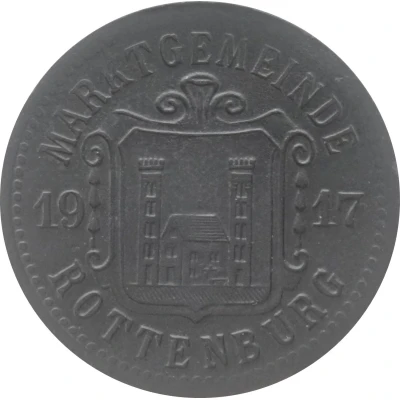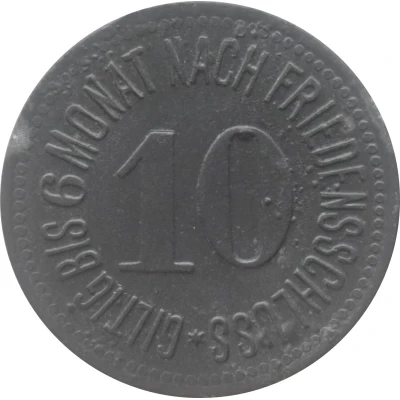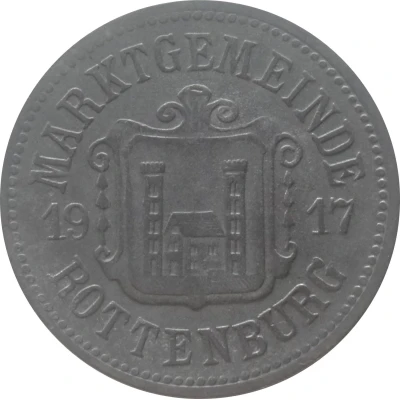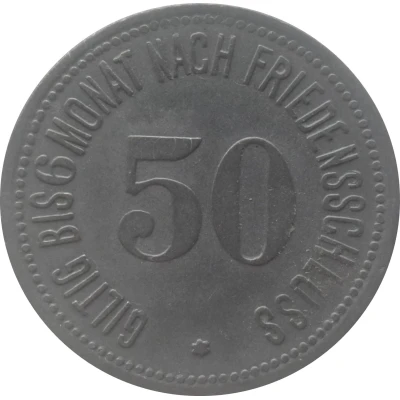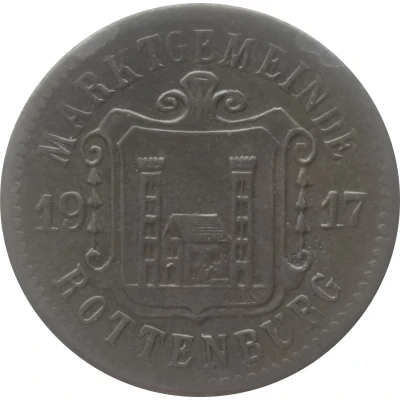
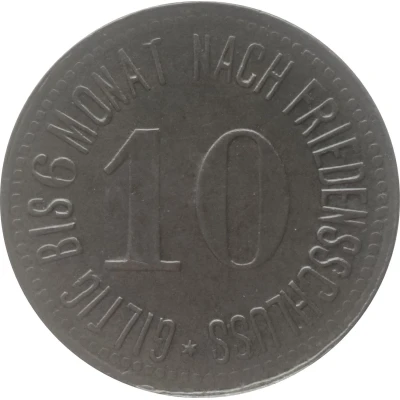

© Willem63 (CC BY-NC-SA)
10 Pfennigs - Rottenburg o. d. Laaber
1917 year| Iron | 2.20 g | 20.0 mm |
| Issuer | Market Town of Rottenburg an der Laaber (Federal state of Bavaria) |
|---|---|
| Emperor | William II (Wilhelm II) (1888-1918) |
| Type | Standard circulation coin |
| Year | 1917 |
| Value | 10 Pfennigs (10 Pfennige) (0.10) |
| Currency | Mark (1914-1924) |
| Composition | Iron |
| Weight | 2.20 g |
| Diameter | 20.0 mm |
| Thickness | 1.0 mm |
| Shape | Round |
| Technique | Milled |
| Orientation | Medal alignment ↑↑ |
| Demonetized | Yes |
| Updated | 2024-10-04 |
| Numista | N#351424 |
|---|---|
| Rarity index | 95% |
Reverse
Pearl rim, legend surrounding denomination.
Script: Latin
Lettering:
GILTIG BIS 6 MONAT NACH FRIEDENSSCHLUSS
10
✶
Edge
Plain
Interesting fact
One interesting fact about the 10 Pfennigs - Rottenburg o. d. Laaber 1917 coin is that it was issued during a time of economic turmoil in Germany. The country was experiencing hyperinflation, and the value of the German mark was plummeting. In response, the government introduced a new currency, the "Notgeld," which was backed by the value of gold and other precious metals. The 10 Pfennigs coin was part of this Notgeld currency, and it was made of iron, which was a more affordable and accessible material than other metals at the time. Despite its humble composition, the coin remains a valuable collector's item today, with some mint conditions selling for hundreds of euros.
